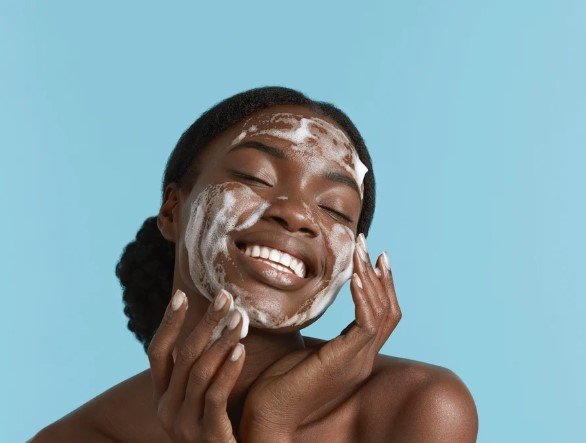The Dangers of Mixing Skincare Products: Tips for a Safe Routine
Summary
- Mixing Skincare Products can lead to potential risks if not done properly.
- It is important to consider the ingredients, compatibility, and potential reactions when combining products.
- Consulting with a dermatologist or skincare professional can help guide you in creating a safe and effective personalized skincare routine.
Introduction
Skincare routines have become increasingly popular in recent years, with many individuals seeking to create personalized solutions for their unique skin concerns. While mixing different Skincare Products can be a fun and creative way to address specific issues, it is important to consider the potential risks involved. In this article, we will explore the dangers of mixing Skincare Products and provide tips on how to create a safe and effective personalized skincare routine.
Potential Risks of Mixing Skincare Products
When it comes to skincare, more is not always better. Mixing different products can lead to potential risks that may harm your skin rather than improve it. Some of the risks to consider when combining Skincare Products include:
Ingredients Interactions
- Some skincare ingredients may not work well together and can cancel each other out or cause irritation.
- When mixing products, it is important to consider the active ingredients and how they may interact with each other.
- Combining ingredients such as retinol and vitamin C can lead to increased sensitivity and irritation.
Compatibility Issues
- The pH levels of Skincare Products can vary, leading to compatibility issues when combined.
- Mixing products with different pH levels can disrupt the skin's natural balance and cause dryness or irritation.
- It is essential to understand the pH levels of your Skincare Products and how they may interact when mixed together.
Potential Reactions
- Skin reactions such as redness, itching, or breakouts can occur when combining incompatible products.
- If you have sensitive skin, mixing Skincare Products without considering potential reactions can exacerbate skin issues.
- It is important to patch test new combinations on a small area of skin before applying them to your entire face.
Creating a Safe and Effective Skincare Routine
While there are potential risks involved in mixing Skincare Products, it is still possible to create a safe and effective personalized skincare routine. Here are some tips to help you navigate the world of skincare combinations:
Know Your Skin Type
Understanding your skin type is crucial when choosing the right Skincare Products. Whether you have dry, oily, combination, or sensitive skin, knowing your skin type can help you select products that are suitable for your skin's specific needs.
Consult with a Dermatologist
If you are unsure about which products to mix or are experiencing skin issues, it is best to consult with a dermatologist. A skincare professional can assess your skin's needs and recommend products that are safe and effective for your skin type.
Introduce Products Slowly
When incorporating new products into your skincare routine, introduce them slowly to avoid overwhelming your skin. Start by using one new product at a time and monitor how your skin reacts before adding additional products.
Perform Patch Tests
Before applying a new skincare combination to your face, perform a patch test on a small area of skin to check for potential reactions. This can help prevent irritation or allergic reactions that may occur when mixing products.
Follow Instructions Carefully
Always read the instructions on Skincare Products carefully and follow the recommended usage guidelines. Some products are meant to be used alone and may not be suitable for mixing with other products. Following instructions can help prevent adverse reactions and ensure optimal results.
Conclusion
While mixing Skincare Products can be a tempting way to create personalized solutions for your skin, it is essential to consider the potential risks involved. By understanding the ingredients, compatibility, and potential reactions of different products, you can create a safe and effective skincare routine tailored to your skin's needs. Consulting with a dermatologist or skincare professional can help guide you in making informed choices and achieving healthy, radiant skin.

Disclaimer: The content provided on this blog is for informational purposes only, reflecting the personal opinions and insights of the author(s) on the topics. The information provided should not be used for diagnosing or treating a health problem or disease, and those seeking personal medical advice should consult with a licensed physician. Always seek the advice of your doctor or other qualified health provider regarding a medical condition. Never disregard professional medical advice or delay in seeking it because of something you have read on this website. If you think you may have a medical emergency, call 911 or go to the nearest emergency room immediately. No physician-patient relationship is created by this web site or its use. No contributors to this web site make any representations, express or implied, with respect to the information provided herein or to its use. While we strive to share accurate and up-to-date information, we cannot guarantee the completeness, reliability, or accuracy of the content. The blog may also include links to external websites and resources for the convenience of our readers. Please note that linking to other sites does not imply endorsement of their content, practices, or services by us. Readers should use their discretion and judgment while exploring any external links and resources mentioned on this blog. Content in this blog is copyright protected, please do not repost or embed content without prior written permission.